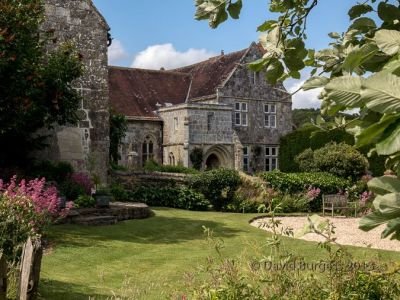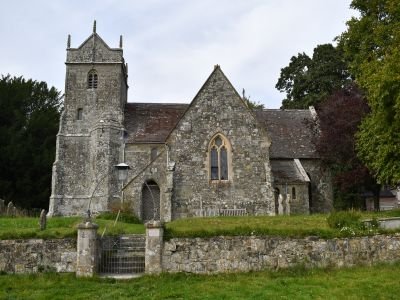OPC Vacancy
Contiguous Parishes (our neighbours)
Ansty – Berwick St. John – Ebbesbourne Wake – Swallowcliffe
Website
Discover Chalke Valley – Fascinating places to stay, things to do and activities to enjoy
St. Marys Church – History of the village and church
The Parish Church of St. Mary
There was a church at Alvediston in the 12th century. It had become part of the endowment of Chalke prebend in Wilton conventual church probably by 1288, when it was described as a chapel and certainly by 1299 when it was said to be a chapel of Broad Chalke. There were vicars of Alvediston from 1299 until the mid 16th century, however from 1584 or earlier Alvediston, along with Broad Chalke and Bower Chalke, were held as one edifice until the perpetual curacy of Alvediston was created in 1861. In the church of St. Mary’s there is what is believed to be the tomb possibly of John Gawen dating to the 14th century. There are also several monuments here to the Wyndham family dating from 1688. The family purchased Norrington Manor House in 1658. The church was rebuilt in 1866 by architect T. H. Wyatt although retaining some 17th century architectural features. In 1963 the benefice was united with that of Ebbesbourne Wake with Fifield Bavant and in 1970 the parishes were united to form the parish of Ebbesbourne Wake with Fifield Bavant and Alvediston. Today the parish is part of the Chalke Valley Churches group.
St. Mary’s Gallery St. Mary’s Interior Gallery St. Mary’s Churchyard Gallery
St. Mary’s Churchyard Memorials Church Interior Wall Memorials
Church Events & Celebrations
Church Backed Charities and Funding
Church News
Church Officials
William Aaron Woods, Vicar 1879-1887
Church Refurbishment & Repairs
Restoration of the Church 1864 Re-opening of St. Mary’s 1865 The Incorporated Society for Buildings & Churches Thomas King Benefaction Board 1826
Church Records
Parish Register Transcripts
Baptisms
Marriages
Parish Registers held at WSHC
Baptisms 1592-1991
Marriages 1594-1992
Burials 1593-1991
Records available from Other Sources
Look ups for Baptisms and Burials can be sought from Heather Sykes (Scottishheather) via the contact us tab at the top of the page.
Parish History
Alvediston parish lies at the head of the Ebble Valley, about 15 kilometres west south west of Salisbury. Lands which later formed Alvediston Manor were among 100 small dwellings granted by King Edwy to the nuns of Wilton in 955. Wilton Abbey held the whole of Alvediston in 1066 except the estate called Trow. The Manor was first recorded by name in 1165 and in 1197 Geoffrey of Wenhaston and his wife Alice released to the Abbey their interest in Alfetheston – probably Alvediston. The civil parish is governed by a parish meeting, a form of governance applied to parishes with small populations. It is in the area of Wiltshire Council unitary authority, which is responsible for all significant local government functions.
Parish Entertainment
Parish Entertainment 1873 Parish Entertainment 1892
Parish News
Civil Registration
1837 – April 1936 Tisbury Registration District
April 1936 – January 1978 Mere Registration District
January 1978 – Present Salisbury Registration District
Buildings and Land
Archaeology
Prehistoric sites in the parish include three Bronze Age bowl barrows on Trow Down and a field system from the same era at Elcombe Down. The Ox Drove, a medieval drovers’ road from Dorset to Salisbury, crossed the south of the parish.
Jurisdictions and Population
In 1377, the parish had 111 poll-tax payers. The population of the parish reached 278 at the 1851 census but fell steadily from the 1870s, reaching a low of 84 in 1981.
Listed Buildings
Grade I
Norrington Manor
Lies about 1 kilometre North North West of the village centre, is a manor house based on a 14th-century great hall. It was probably built by John Gawen, a lawyer, justice and Member of Parliament, who acquired the property in 1377. Around 1659 it was bought by Wadham Wyndham, a lawyer and later a Justice of the King’s Bench.
Grade II
Samways House
Built around 1700
Samways Farm Stables
Built around the mid 1800s. The clocktower over the archway entrance to the stables was built by William Day in 1861 to celebrate his horse Dulcibella winning the Cesarewitch at Newmarket
Notable Buildings
Alvediston Manor House
This is located not far from the church and is of the 18th century. It is built of brick, unusual for this area where most buildings are made of stone. The house is built on two storeys and there is a shell roof over the main entrance. It is surround by curved garden walls and was the last home of the Sir Anthony Eden, Earl of Avon who is buried in the local churchyard.
Public Houses
Crown Inn
This building was converted from three 14th century cottages situated between two old drovers roads. During the 1980s and 1990s the building suffered from two extensive fire, resulting in the building being largely rebuilt.
Sites of Special Scientific Interest
Pincombe Down and Gallows Hill. The latter is notable for rare chalk grassland species and a scarce species of butterfly.
Crime and Legal Matters
Assaults
Assault on Husband and Wife 1838 Assault in Salisbury Market 1861 Man Involved in Two Assaults 1871
Bastardy
Bastardy Examinations 1849-1857
Court Cases
In The County Court King v Gould 1853
Crime Reports
Drink Related Crime
Beer and Misrepresentation 1897
Fraud
General Crime
Poaching
Prisons and Prisoners
Committed to Gaol 1800-1849 Committed to Fisherton Gaol 1800-1849 Committed to the County Gaol 1850-1899
Theft
Stealing Fire Wood 1834 Theft of Rings 1931
Victims of Crime
Directories
| Post Office 1855 | Post Office 1859 | Kellys 1867 | Post Office 1875 | Kellys 1903 |
| Kellys 1907 | Kellys 1915 | Kellys 1931 | Kellys 1939 | Post Office Telephone 1940 |
Education
A National School was built in 1872 but closed in 1922.
Education News 1850-1899 Obituary of Louisa Young, Teacher 1931
Emigration and Migration
Employment and Business
Agriculture and Land
Game Licenses 1834 Labourers Union Fete 1920
Apprentices
Apprentice records published here may not necessarily mean that the apprentice was from the parish but was apprenticed to a master within the parish.
Community Services
Police
Wiltshire Constabulary 1858 Edwin Mullins Andrews, Police Officer 1878-1969
Miscellaneous Items
Miscellaneous Documents
Non Conformity and Other Places of Worship
A Primitive Methodist chapel was built in 1894 and closed sometime before 1951. As of 2019 the building was standing but unused.
Non Conformist News 1850-1899 Primitive Methodists Fete 1923 Primitive Methodists Presentation 1924
People and Parish Notables
Associations, Clubs, Organisations and Societies
Wiltshire Friendly Society Membership 1827-1871
Bankruptcy
Bankrupty Notices 1700-1899 Bankruptcy Notice of Thomas Lawes 1783
Census Returns Transcripts
1841 1851 1861 1871 1881 1891 1901 1911
Elections and Polls
Poll Book 1818 Voters List 1832 Poll Book 1865
Family Notices
General Items
Poetry by Eliza Rogers 1857 Earl of Pembroke Comes of Age 1871
Inquest Reports
Inquest Reports 1800-1849 William Baker 1864 Sarah Ellis 1849
Parish Notables
Sir Anthony Eden – British Prime Minister
Sport
Taxes
Wedding Reports
Marriage of James Good & Hannah Day 1869
Poor Law, Charity and The Workhouse
Probate
Probate Index 1553-1830 (WSHC) Probate Notice of Charles Ousby Trew 1932
Inquisitions Post Mortem of Lands Held
William, Earl of Pembroke 1630 William Gould 1640
War, Conflict and Military Matters
Military News
Servicemen & Women
WWI
Casualties
Casualty Biographies 1914-1918 Bertram William James Moxham 1915
War Memorials and Books of Remembrance
Casualties of WWI Honoured in the Diocese of Salisbury Memorial Book
Norrington

Norrington Manor
Buildings and Land
Norrington Manor
The house is situated east of Shaftesbury and isolated amongst the hills below Tisbury and set in the parish of Alvediston. The house is believed to have been built by John Gawen who purchased the land in 1377 and is said to have been built during the reign of Richard II. The Gawens were one of the oldest English families with links to Sir Gawain of the times of King Arthur. The estate was bought in 1658 and the building undertook some rebuilding. The 14th century hall and vaulted undercroft survive as well as a vaulted porch and doorway with a kings head corbel. Outside can be seen three transom windows.

